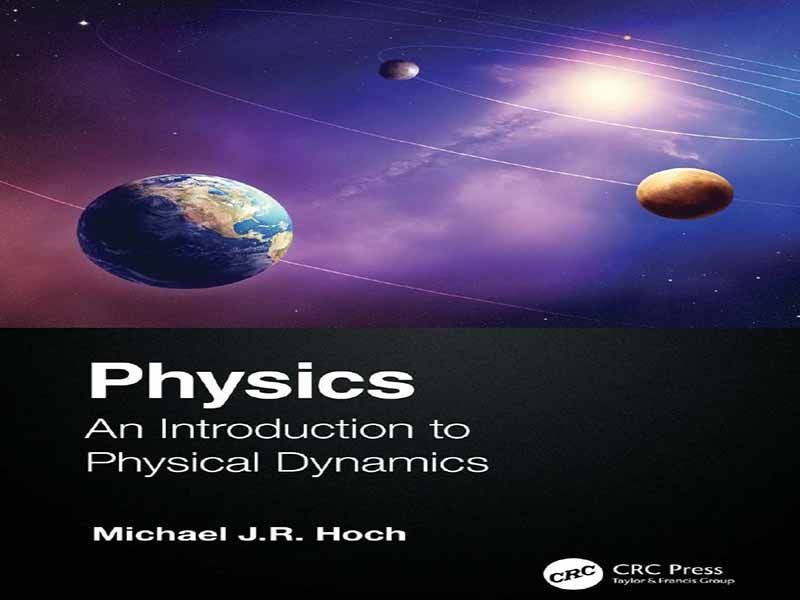- عنوان کتاب: Physics -An Introduction to Physical Dynamics
- نویسنده: Michael J.R. Hoch
- حوزه: دینامیک
- سال انتشار: 2025
- تعداد صفحه: 225
- زبان اصلی: انگلیسی
- نوع فایل: pdf
- حجم فایل: 3.0 مگابایت
مکانیک کلاسیک شاخهای مهم از فیزیک است و کاربردهای زیادی در علوم و مهندسی دارد. این کتاب برای دانشجویان مبتدی فیزیک در دانشگاهها نوشته شده است. دانشجویانی که دورههای مقدماتی ریاضیات را گذراندهاند یا در آن شرکت خواهند کرد، میتوانند در این دورهها شرکت کنند. از نظر تاریخی، علاقه زیاد به دینامیک اجسام متحرک پس از مشارکتهای مهم ایزاک نیوتن در این موضوع در قرن هفدهم ایجاد شد. نیوتن با استفاده از قانون معکوس مجذور گرانش خود، توانست با موفقیت قوانین کپلر در مورد حرکت سیارات به دور خورشید را توضیح دهد. این دستاورد الهامبخش بسیاری از کاربردهای دیگر آنچه قوانین حرکت نیوتن نامیده میشد، بود. این کتاب که شامل دوازده فصل به همراه مجموعه مسائل مرتبط است، به خواص دینامیکی انواع سیستمهای فیزیکی میپردازد. سه فصل اول ایدههای اساسی مکانیک – به ویژه جرم، طول و زمان – را معرفی میکند و فصل 3 مفهوم تکانه را در ارتباط با مکانیک نیوتنی بررسی میکند. کاربرد مکانیک نیوتنی در فصلهای ۴ تا ۶ بررسی شده است. فصل ۴ مفاهیم کار مکانیکی و انرژی مکانیکی را با کاربردهای توضیحی در حرکت انتقالی و/یا چرخشی اجسام انعطافپذیر مانند ذرات و اجسام سهبعدی با شکل ثابت معرفی میکند. فصل ۵ حالت خاص و مهم حرکت چرخشی را مورد بحث قرار میدهد، در حالی که فصل ۶ دینامیک جسم صلب را پوشش میدهد. فصلهای ۷ تا ۱۰ کاربرد قوانین نیوتن و انرژی مکانیکی را در سیستمهای انعطافپذیر، از جمله سیالات جاری، امواج روی ریسمانها و فنرهای نوسانی، تعمیم میدهند. دو فصل پایانی، قوانین ترمودینامیک، به ویژه انتقال انرژی گرمایی بین سیستمها در دماهای مختلف را توضیح میدهند. واحدهای سیستم بینالمللی (SI) برای طول و زمان در فصل ۱، همراه با تعریف بنیادی اخیر واحد جرم، معرفی شدهاند. واحدهای SI در سراسر کتاب استفاده شدهاند.
Classical mechanics is an important branch of physics and finds many applications in both science and engineering. This book is aimed at beginning physics students at universities. The students will have completed, or will be attending, introductory mathematics courses. Historically, great interest in the dynamics of moving objects followed Isaac Newton’s major contributions to the subject in the seventeenth century. Using his inverse square law of gravitation, Newton was able to successfully account for Kepler’s laws of planetary motion around the Sun. This achievement inspired many other applications of what were called Newton’s laws of motion. This book, which contains twelve chapters with accompanying problem sets, deals with the dynamical properties of a variety of physical systems. The first three chapters introduce the basic ideas of mechanics – in particular mass, length, and time, with Chapter 3 exploring the concept of momentum as it relates to Newtonian mechanics. The application of Newtonian mechanics is addressed in Chapters 4– 6. Chapter 4 introduces the concepts of mechanical work and mechanical energy, with illustrative applications to the translational and/ or rotational motion of inflexible objects such as particles and 3D objects of fixed shape. Chapter 5 discusses the important special case of rotational motion, while Chapter 6 covers rigid body dynamics. Chapters 7– 10 generalize the application of Newton’s laws and mechanical energy to flexible systems, including flowing fluids, waves on strings, and oscillating springs. The final two chapters elucidate the laws of thermodynamics, especially heat energy transfer between systems at different temperatures. The Système International (SI) units for length and time are introduced in Chapter 1, together with the recent fundamental definition of the mass unit. SI units are used throughout the book.
این کتاب را میتوانید از لینک زیر بصورت رایگان دانلود کنید:




































نظرات کاربران